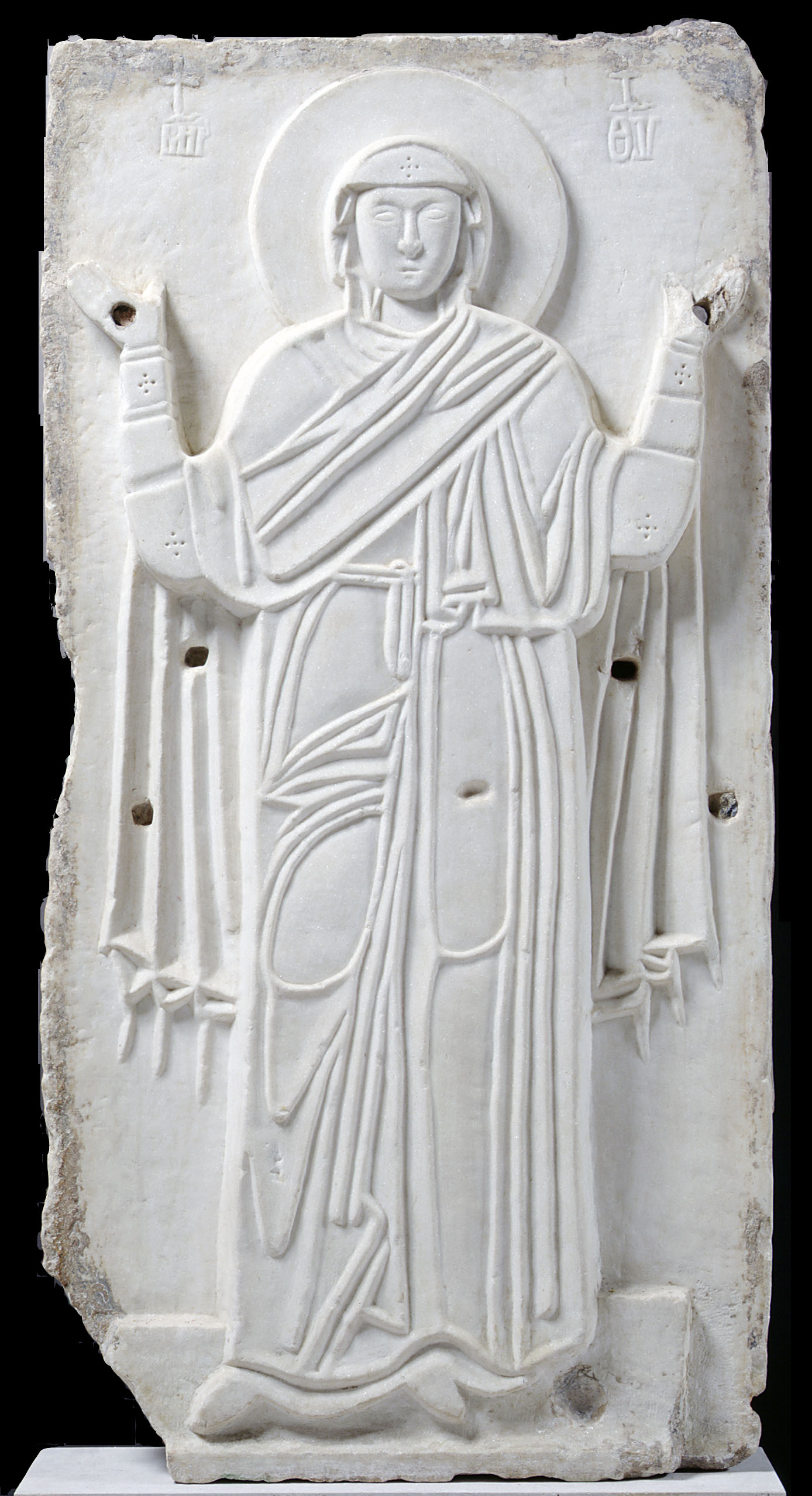
Marble icon with Praying Virgin
According to the prevailing theory, on the icon is depicted the Virgin standing, frontally in a posture of prayer. Her hands are raised with the palms facing the sky. On either side of the halo is the relief inscription ΜΗ(ΤΗ)Ρ Θ(ΕΟ)Υ(=Mother of God). The Virgin stands on a low stool and wears a long tunic tightened at the waist from which hangs handkerchief, the encheirion. Long scarf, the maphorion, ending in fringes, is covering the head and shoulders. The palms are pierced by two circular holes, considered to have been used for the gush of holy water or myrrh. Four more deep holes, two under every elbow, were used to support collection containers of the gushing liquid.
The prototype of this iconographical theme is considered to be the icon of the monastery Blachernae in Constantinople. The icon was probably originally placed in a hagiasma, a sacred space with a water source. The habit of representing the Virgin spurting holy water is associated with its status as a source of life, an iconographic theme that later is crystallized as Panagia- Zoodochos Pigi in icons and engravings. The relief icons of holy persons is a new artistic genre, appearing after Iconoclasm, around the 9th-10th century. Usually in a rectangular shape and relatively large size are placed in the east of the sanctuary, in shrines, in entrances to churches, even in squares, fountains and city gates. Sculpture workshops in Constantinople and Thessaloniki produce such icons, some of which are carried by the Crusaders after the fall of 1204, as spoils, in Venice.
Code
AG 3152
Type
Marble icon
Chronology
11th c.
Dimensions
Height 135 cm., width 70 cm., thickness 15 cm.
Material of Construction
Marble
Origin
Thessaloniki, church of Hypapanti



